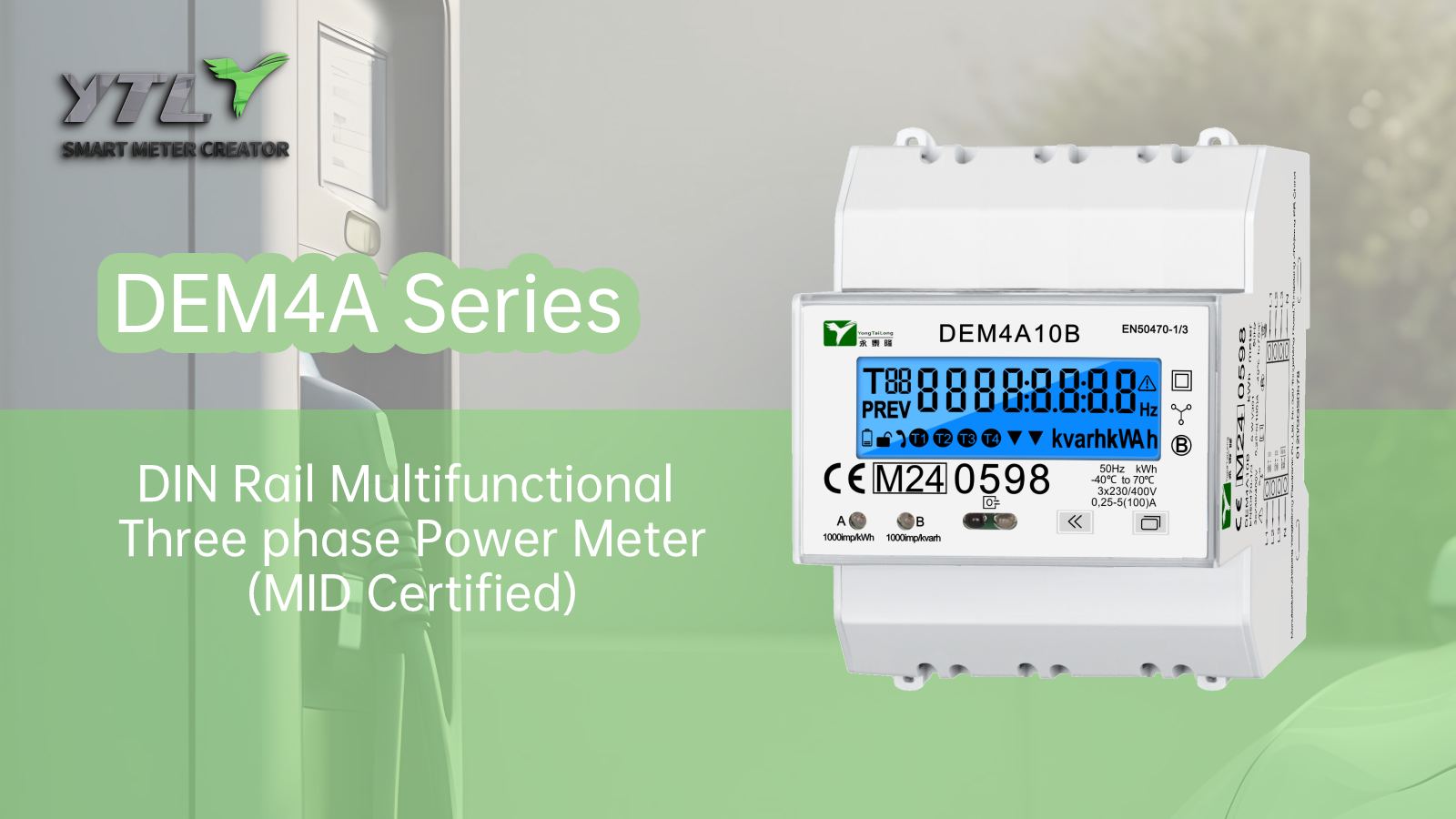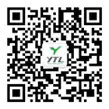In the operation system of photovoltaic power plants, bidirectional metering meters play a crucial role. They are like an all-around steward, accurately controlling the bidirectional flow of energy in the power plant, providing solid guarantees for the efficient operation, stable power generation, and good interaction with the power grid of the power plant.
1、 Accurate measurement, clear bidirectional flow of energy
The energy flow of photovoltaic power plants is not in a single direction, but forms a bidirectional interaction between the power generation end, the power consumption end, and the grid. Bidirectional metering meters have metering capabilities and can accurately record the electricity transmitted from photovoltaic power plants to the grid and the electricity obtained from the grid. During the power generation process, photovoltaic modules convert solar energy into direct current, which is then converted into alternating current by inverters. A portion of the electricity is supplied to the load inside the station, while the remaining portion is transmitted to the power grid. The bidirectional metering meter accurately measures the output electrical energy on the AC side, making the power generation revenue of the power station clear and measurable. At the same time, when the photovoltaic power station has insufficient power generation or no light at night, it needs to obtain electricity from the grid. At this time, the bidirectional metering meter can also accurately record the input electricity, providing a reliable basis for electricity bill settlement.
Traditional measurement methods may have errors or blind spots in the measurement of bidirectional energy flow, while bidirectional metering meters use advanced measurement technology with high-precision sampling and calculation capabilities. It can monitor key parameters such as voltage, current, and power in real-time, and dynamically track the bidirectional flow of electrical energy. For example, in some complex electricity scenarios, such as frequent changes in station load and fluctuations in grid voltage, bidirectional metering meters can still maintain stable measurement accuracy, ensuring that every kilowatt hour of electricity flow is accurately recorded. This precise measurement not only provides data support for the operation and management of power plants, but also lays the foundation for fair trade with the power grid.
2、 Real time monitoring to ensure stable operation of the system
Bidirectional metering meters are the "health monitoring devices" of photovoltaic power plants, which can monitor the operating status of the power plant in real time, detect potential problems in a timely manner, and ensure the stable operation of the system. It is closely connected to various key equipment of the power station, such as inverters, photovoltaic modules, batteries, etc., and collects real-time operational data of the equipment for analysis and judgment.
When photovoltaic modules experience local shading, aging, and attenuation issues, it can lead to a decrease in power generation. Bidirectional metering meters can detect such abnormal situations in a timely manner by monitoring changes in output power. At the same time, for inverter faults such as harmonic distortion, poor heat dissipation, etc., bidirectional metering meters can also issue early warnings by monitoring the waveform and parameter changes of current and voltage. For example, when the harmonic components at the input of the inverter exceed the normal range, the bidirectional metering meter will immediately transmit this abnormal information to the monitoring system, reminding the operation and maintenance personnel to carry out timely maintenance to avoid the fault from escalating.
In addition, bidirectional metering meters can also monitor the power quality of the power station, such as voltage deviation, frequency deviation, three-phase imbalance, etc. These power quality indicators directly affect the normal operation of power plants and their impact on the power grid. Through real-time monitoring, operation and maintenance personnel can take timely measures, such as adjusting reactive power compensation devices, optimizing load distribution, etc., to ensure that the power output of the power station meets the requirements of the power grid, while also ensuring the safe and stable operation of equipment in the station.
3、 Two way interaction to achieve a friendly connection with the power grid
In the context of smart grid, photovoltaic power stations need to achieve bidirectional interaction with the grid, and bidirectional metering meters are the key bridge to achieve this interaction. It can transmit real-time data such as power generation information, electricity consumption information, and equipment operation status to the power grid, enabling the power grid to comprehensively understand the operation of the power station and carry out reasonable scheduling and management.
When there is a peak in electricity consumption in the power grid, bidirectional metering meters can adjust the output power of the power station according to the dispatch instructions of the power grid, increase the amount of electricity transmitted to the power grid, and alleviate the power supply pressure of the power grid. When the power grid malfunctions or requires maintenance, the bidirectional metering meter can promptly detect the abnormal state of the power grid and control the power station to disconnect from the grid, entering an isolated operation mode to ensure the continuous power supply of important loads in the station.
At the same time, bidirectional metering meters also support demand response functions. When the power grid sends out a demand response signal, the power station can adjust its operation mode reasonably according to its own power generation and consumption situation, such as reducing the electricity consumption of non critical loads, increasing the discharge of energy storage equipment, etc., to respond to the demand of the power grid and obtain corresponding compensation benefits. This bidirectional interaction not only improves the stability and reliability of the power grid, but also brings additional economic benefits to photovoltaic power plants.
4、 Data support helps optimize management of power stations
The large amount of data collected by bidirectional metering meters provides strong support for the optimized management of photovoltaic power plants. By analyzing historical power generation data, electricity consumption data, equipment operation data, etc., operation and maintenance personnel can understand the operating rules of the power station, discover existing problems and potential points, and formulate targeted optimization plans.
For example, by analyzing power generation data from different time periods, the cleaning cycle for photovoltaic modules can be determined to improve power generation efficiency; By analyzing electricity consumption data, it is possible to optimize the distribution of loads within the station and reduce electricity costs; By analyzing equipment operation data, a reasonable maintenance plan can be developed to extend the service life of the equipment. In addition, these data can also be used for performance evaluation and benefit analysis of power plants, providing reference for investment decisions, expansion plans, and other aspects of power plants.
In the era of energy Internet, the value of data is increasingly prominent. As the core equipment of data collection, two-way metering meters will provide a solid data foundation for photovoltaic power stations to access the energy Internet platform, and achieve coordinated and optimized operation with other energy systems, such as interaction and cooperation with energy storage systems, electric vehicle charging facilities, etc., to build a more intelligent and efficient energy ecosystem.
5、 Adapt to diverse scenarios and enhance the applicability of power stations
The construction scenarios of photovoltaic power stations are diverse, including ground power stations, distributed rooftop power stations, agricultural photovoltaic complementary power stations, etc. The environmental conditions and electricity demand vary greatly in different scenarios. Bidirectional metering meters have a wide range of adaptability and can meet the application needs in different scenarios.
In harsh environmental conditions such as high temperature, low temperature, high humidity, and frequent sandstorms, bidirectional metering meters adopt advanced protective technologies and materials, with good anti-interference ability and durability. For example, its shell is made of high-strength and corrosion-resistant materials, which can effectively resist the erosion of the external environment; The internal circuit adopts moisture-proof and dust-proof design to ensure stable operation in harsh environments.
For distributed rooftop power stations, due to limited installation space, bidirectional metering meters are usually designed in a compact and easy to install form, which can adapt to various roof layouts. In large ground power stations, bidirectional metering meters have powerful data processing and communication capabilities, which can meet the needs of large-scale data collection and remote monitoring.
6、 Adapt to the development trend and lead the future of the industry
With the acceleration of global energy transition, the photovoltaic industry has ushered in vast development space. As a key equipment for connecting photovoltaic power plants with smart grids, bidirectional metering meters will also keep up with industry development trends and continuously upgrade and innovate.
In the future, bidirectional metering meters will become more intelligent, digital, and networked. It will integrate more functional modules, such as artificial intelligence algorithms, blockchain technology, etc., to achieve more accurate measurement, intelligent scheduling, and secure transactions of electricity. For example, using artificial intelligence algorithms to predict and analyze power generation and consumption data, achieving autonomous optimization operation of power plants; Utilizing blockchain technology to achieve decentralization and transparency in electricity trading, improving transaction efficiency and security.
At the same time, with the development of DC distribution technology, bidirectional metering meters will gradually expand into the field of DC metering, realizing bidirectional metering and management of DC energy, and providing support for efficient connection between photovoltaic power plants, DC loads, and DC energy storage systems.
Bidirectional metering meters play an indispensable role in photovoltaic power plants. It is a tool for precise measurement, a sentinel for system monitoring, a bridge for interaction with the power grid, a data source for optimizing management, an expert in adapting to diverse scenarios, and a pioneer in the future of the industry. In the construction and operation of photovoltaic power stations, equipping high-performance bidirectional metering meters is a necessary condition for achieving efficient, stable, and economical operation of the power station, and is also an important measure to promote the deep integration of the photovoltaic industry and the smart grid. With the continuous advancement of technology and the expansion of application scenarios, bidirectional metering meters will play a more important role in the photovoltaic field, contributing to the construction of a clean, low-carbon, safe, and efficient energy system.

 English
English 简体中文
简体中文












.png?imageView2/2/w/500/h/500/format/png/q/100)




